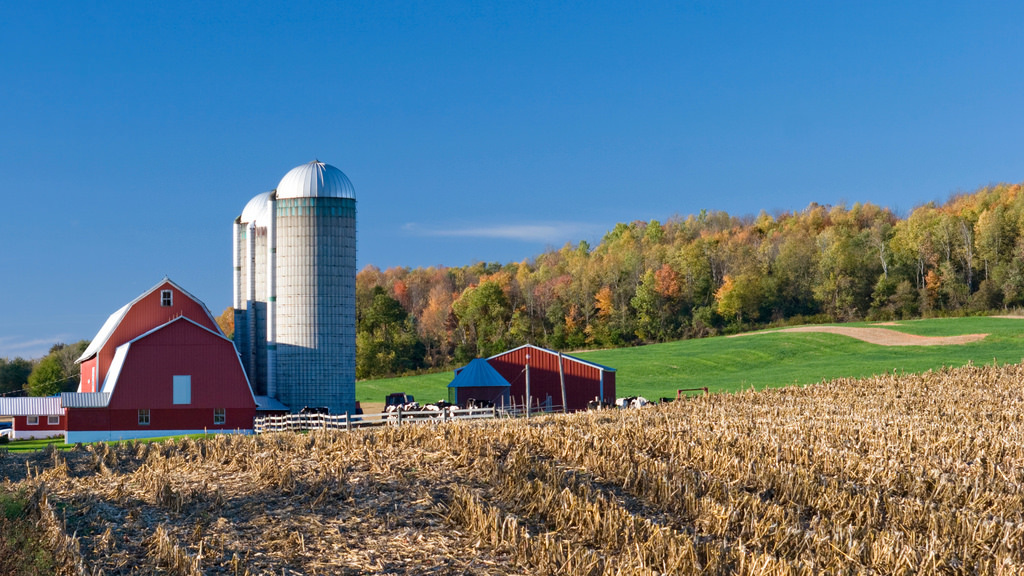| No one needs to stop the presses to report that America’s farmland is dwindling. All you have to do is look at your own genealogy to see the story unfold. I’m guessing you won’t have to go back too many generations to find people who supported themselves through farming, whereas chances are you don’t. |
| | Chances also are good your kids are fuzzy on the concept of the origins of the processed meat on their lunchtime sandwiches or the hotdog at the family barbecue. Meanwhile, few things would make them lose their appetite quicker than spelling it out for them. But sometimes it helps to put things in stark terms. In 1790, farmers and farm workers made up about 90 percent of the nation’s 4 million people. Today they comprise about 2 percent of almost 320 million. If you’re good at math, you’ll see that we have more farmers in real numbers today, but there is one farmer for every 50 people, compared to a land where we had just about all farmers everywhere back in the day. So when we talk about Utah’s tremendous growth rate gobbling up farmland, it has to be put into that perspective. One farmer can feed about 155 people today, compared to 19 in 1940. The American Farm Bureau Federation says today’s farmer produces 262 percent more than in 1950, and with 2 percent less seed, labor, fertilizer and feed. We’ve gotten better at farming, and we don’t need as much land for it any more. So why is it important to stop it from disappearing? Because that’s what people want, according to Robert Grow, chief executive officer of Envision Utah, which works as a neutral facilitator to help communities plan for healthy growth. He said research shows young people today want locally grown food, and older people want food security. In a world where scary disruptions are just a terrorist attack away, and where tainted beef in one part of the country can ripple through grocery stores everywhere, people want to eat locally produced food. To this, I add another perspective: The closer you live to where your food is produced, the better you appreciate the realities of life; the causes and effects of a world that too often comes in prepackaged synthetic materials. But you don’t see people buying up commercial land to put up a farm. Once it’s gone, it isn’t coming back. It’s also gone as an open space – the sort of thing that could at least be used as a nice, green park in some future urban development. If any of this has a familiar ring to it, it’s because Utah’s leaders have done a lot of talking and handwringing about this over the years, all while cities continue to annex farmland and developers continue to offer struggling farmers good money. More than 20 years ago, former Gov. Mike Leavitt convened a growth summit to discuss the issue. A few years later, lawmakers set up what became known as the LeRay McCallister Fund to preserve open space and farmland. Named for a longtime legislator, the fund was to provide money that would be matched by private conservation groups and used to pay fair market value to acquire land that otherwise would be developed. Lawmakers immediately balked at funding it. This year they appropriated exactly zero, except for an amount specifically designated to help preserve the endangered sage grouse. If you’re keeping score, lawmakers favor spending $14 million to sue the federal government to obtain title to federal land in Utah, but will give zero to help preserve the open spaces already in private hands. As a Deseret News report this week said, some farmers and ranchers are coming to the end of the road, with few options but to sell. Few Utah cities have strategies for this, other than to annex farmland and hope someone comes along to develop it when the farmer is ready. Envision Utah has a toolbox of options for those cities and farmers. But, “We’re not going to save every farm,” Grow said. Maybe, however, we can save just enough to keep us from becoming too disconnected from fresh fruits and vegetables, and from the lives our ancestors knew so well. |


 RSS Feed
RSS Feed

